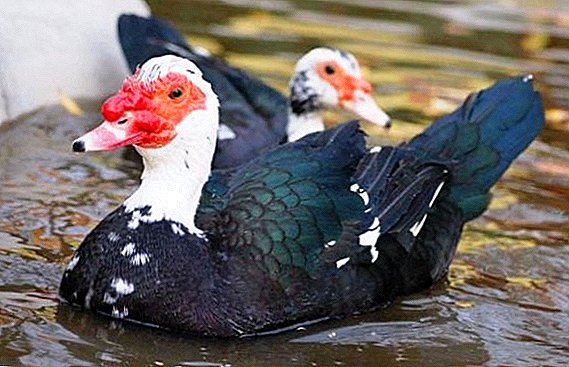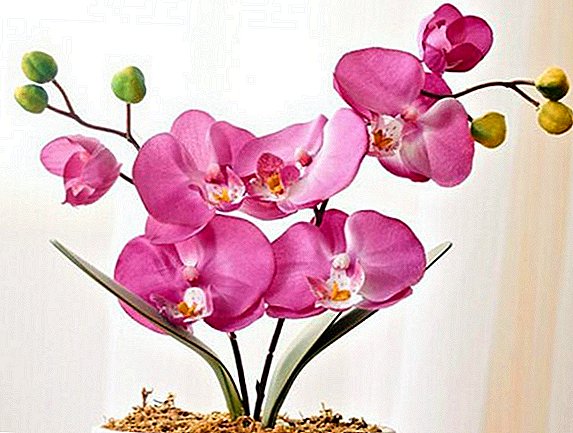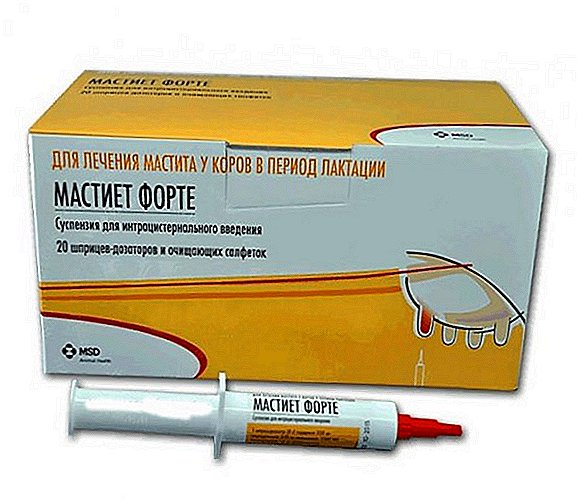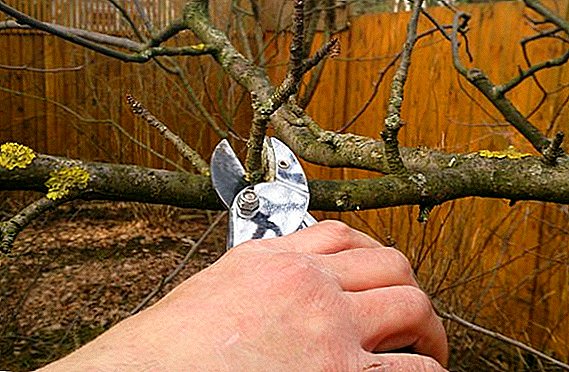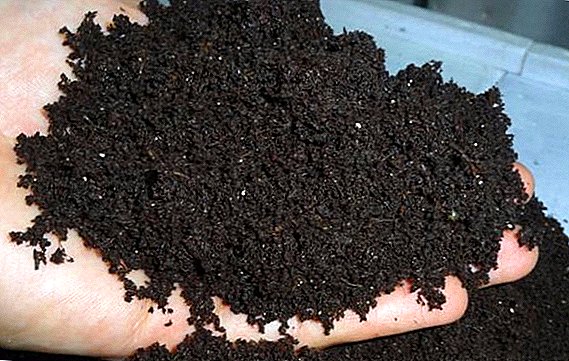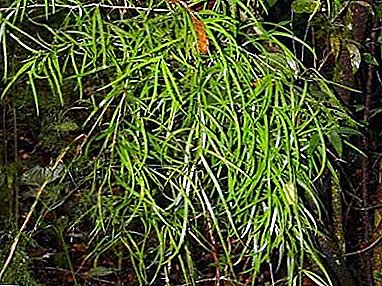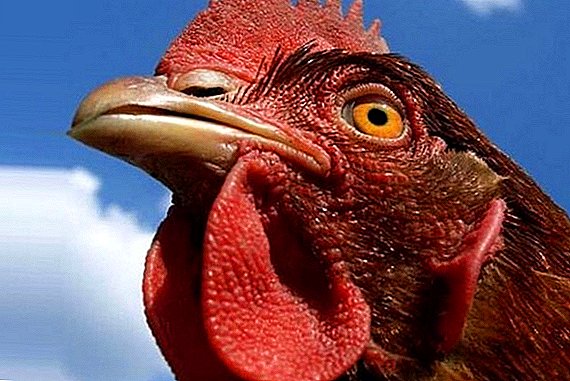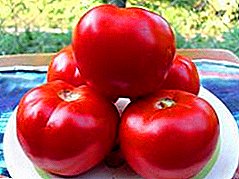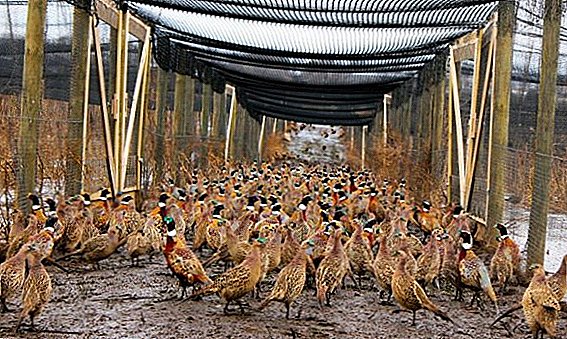 Today, as a poultry, farmers increasingly start pheasants - this bird is not only externally beautiful and can become an ornament to any yard, but also has tasty nourishing meat. One of the conditions for the correct keeping of pheasants is the construction of a suitable enclosure that would meet all the preferences and characteristics of this bird. How to calculate the right size, from which material it is better to build an open-air cage and what tools are needed - in more detail in the article.
Today, as a poultry, farmers increasingly start pheasants - this bird is not only externally beautiful and can become an ornament to any yard, but also has tasty nourishing meat. One of the conditions for the correct keeping of pheasants is the construction of a suitable enclosure that would meet all the preferences and characteristics of this bird. How to calculate the right size, from which material it is better to build an open-air cage and what tools are needed - in more detail in the article.
General requirements for enclosures for pheasants
Pheasants are large wild birds that cannot be freely grazed in non-enclosed areas (such as chickens). Because of their impressive size, they need a larger area: pheasants do not like accuracy, therefore the aviary needs to be built so that every bird has enough space for movement (and for the chicks it is also possible to fly). In addition, pheasants are quite shy, and this also needs to be considered when building an aviary.
Learn how to professionally breed pheasants.
Thus, a properly constructed pheasant house looks like this:
- location on dry sandy ground, on the sunny side;
- the top is necessarily covered with a net - kapron or from ropes (shy pheasants often sharply soar perpendicularly upwards and can injure the metal net);
- the presence of decorative snags, stairs, green bushes and other elements inside the enclosure;
- the presence of grass in the zone of grazing birds - if the grass does not grow independently, it should be sown;
- additional heating systems (poultry houses with warm air supply) - under severe climatic conditions;
- for Diamond or Gold pheasants, inside the house, individual houses are assumed to be located;
- the back wall of the house should be deaf - this is necessary for privacy and rest of the bird;
- availability of a separate place for young and adult birds (for this you will need an additional partition inside the house).

If you plan to keep more than 15 units of this bird, you will need additional barriers that will divide the aviary into zones. This is to avoid crowding and crushing of birds, as well as help prevent fights between males.
Possible options aviaries
The standard material for building an open-air cage is a tree: this material is solid, durable and tolerates weather conditions. Nevertheless, the framework for the pheasant zoo can be not only wooden, but also metal: this design is lighter, more compact, it is easier to disassemble and assemble.
Important! Some breeds of pheasants must be kept in pairs, and not in a flock. These include the royal pheasant - the male of such a breed is distinguished by its aggressiveness, it protects its territory and provokes fights with other males: such qualities of the bird make it impossible to keep this breed with other relatives.
At the same time, at least one wall is tightly hammered with a tree or sheets of metal or an additional wooden branch is made deaf (such a shelter is necessary for the bird to hide). The wooden and metal frame around the perimeter is covered with a net, paying special attention to the roof (as a rule, the ceiling of the open-air cage is tensioned with a double layer of the net: the bottom one is with a rope and the top one is metal). 
For additional protection from precipitation over the mesh, a wooden or metallic material is tensioned, which must be removed in sunny, warm weather.
The modern version of the enclosure is a polycarbonate greenhouse: this enclosure will have sufficient impact resistance, perfectly protect against precipitation and will maintain constant dryness inside the greenhouse. Polycarbonate greenhouses are becoming increasingly popular: such a house is very easy to build, and besides, it is very convenient for pheasants.
Check out the popular breeds of pheasants, in more detail with pheasants ordinary, eared, white, gold, royal.
How to calculate the desired size
The size of the enclosure will ultimately depend on two indicators: how many birds will be kept (taking into account the possible appearance of young stock) and what kind of pheasant breed (we have already considered that some species can be settled only in pairs).
The standard calculation of the required size of the aviary is:
- one adult bird should have a minimum of 1.5 square meters, and for a pair (for example, a male and female royal pheasants) - not less than 10 meters;
- The height of the house should not be less than 2.5 meters - this will allow the chicks to acquire the skills of flying in conditions of limited movement.

Thus, for the maintenance of pheasants in the amount of 10 units you will need an open-air cage with a total area of at least 15-17 square meters and a height of at least 2.5 meters.
Did you know? Common pheasant is the national bird of Georgia, and one of the most popular Georgian dishes - chakhokhbili - is made from the meat of this particular bird. It is noteworthy that the name "chakhokhbili" is translated from Georgian as "pheasant". In addition, the pheasant is a symbol of South Dakota in the United States and the Iwate region in Japan.
How to build an enclosure for pheasants
The construction of poultry houses for pheasants is not a troublesome or costly measure: however, the quality and shelf life of the enclosure depends on how high-quality materials are selected and whether the sequence of actions during the construction will be properly observed.

Necessary materials
For the construction of a standard simple aviary will need:
- Galvanized or varnished mesh. Such a special mesh coating will provide additional protection for the material and prevent rust. The size of the cells should not exceed 1.5 by 5 cm, otherwise tits and sparrows, stealing food from pheasants, weasels, ferrets and other pests can sneak through very large holes. In addition, chicks and young pheasant eaters will also be able to get through large cells outside, where they will easily become prey for a predator. In order to prevent a bird from being wounded through a sharp metal net (chain-link), you can use a plastic mesh with small cells.
- Kapron or rope net. Such a network stretches the ceiling in an open-air cage: the cells near the rope or nylon network should not exceed 2.5 cm. The average shelf life of such a ceiling will be from 5 to 7 years, after which the roof will have to be changed.
- Tiling, slate or sheets of metal for sheltering a roof. For the roof of the gable type additional rafters will be needed, and for the single-slope type - lathing (solid flooring).
- Structural beams (wooden or metal). You can use concrete pillars - such a frame will be very durable, although more expensive. In addition, wooden boards will be needed for the construction of houses, separate recreation areas, poles and perches.
- Cement and sand. Required to fill the foundation (sand will be laid on top of the finished foundation as the main soil).
- Nails, staples. Required to secure the mesh and frame.
- Varnish, paint, slaked lime.
- Gravel (as an additional layer of soil).

The financial cost of building a small poultry house with a capacity of 5-8 heads will be calculated on average $ 40-50. Larger large enclosures are more troublesome to build, so farmers mostly use compact, lightweight and portable poultry houses.
Important! In addition to the danger of a bird being injured on a metal net, this material is also not used for tensioning the roof because in the winter period ice is frozen onto the metal net, which quickly spoils the roof and provokes the appearance of corrosion.
Tools for work
For the construction of the enclosure may need such tools:
- hammer;
- pliers;
- screwdriver;
- saw;
- welding machine;
- plane;
- jigsaw;
- brushes (for processing and painting wood).

In addition, you will need clothing and gloves to protect against contamination and possible injury to the tool.
Learn how to catch, how to breed, how to feed, how to reliably prevent pecking, how to treat pheasants.
Step-by-step instruction
When the selection of materials and necessary tools is completed, it is necessary to proceed to the next stage - the construction of the aviary itself. The step-by-step instruction on building looks like this:
- Soil preparation and foundation laying. Topsoil is cleaned and removed, then the cleaned area is sprinkled with slaked lime (layer up to 2 cm). Such a procedure is necessary for the disinfection of the future house. Next, the foundation is being prepared: the necessary markings are made on the ground, and a ditch with a depth of up to 70 cm is dug out along the entire perimeter of the future enclosure.
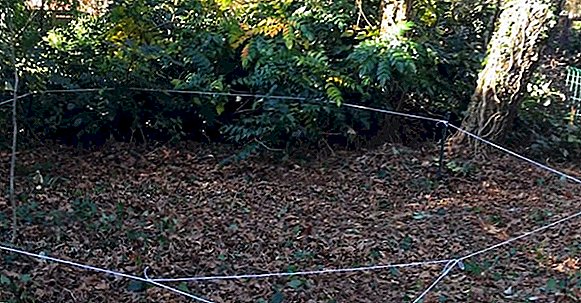 Layout of the foundation. Then it is necessary to prepare a mortar (cement with sand in the ratio 1: 4). Bars are laid in a dug ditch, and poured on top of the prepared solution (the width of the bar should not be much less than the width of the ditch itself). The drying time of the foundation is from 2 to 7 days depending on weather conditions.
Layout of the foundation. Then it is necessary to prepare a mortar (cement with sand in the ratio 1: 4). Bars are laid in a dug ditch, and poured on top of the prepared solution (the width of the bar should not be much less than the width of the ditch itself). The drying time of the foundation is from 2 to 7 days depending on weather conditions. - Frame installation. On the prepared foundation are placed the columns of the frame and carefully fixed in the ground. Such supports should be immersed in the ground to a depth of at least 40 cm. It is important that the front support poles be buried deeper and the rear ones smaller (for example, 50 and 40 cm, respectively). Support posts are also mounted in the middle of the enclosure - they will protect the grid from sagging.
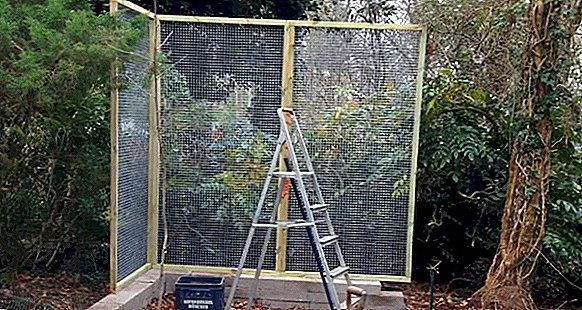 Installation of the frame Next, the grid is tensioned onto the installed frame and fixed with brackets. It is important to bend all the sharp ends of the brackets - frightened pheasants can get hurt about them.
Installation of the frame Next, the grid is tensioned onto the installed frame and fixed with brackets. It is important to bend all the sharp ends of the brackets - frightened pheasants can get hurt about them. Mesh mount
Mesh mount - Crate. After installing the frame and enclosing it with a grid, you should install the roof of the enclosure. If the roof is supposed to be of a shed type with a slate coating, then the entire perimeter is covered with a crate. It is done this way: on top of the installed supports, the bars are fastened (along the entire perimeter), then one additional beam is fixed transversely to the middle support, and the second - longitudinally. Boards or metal sheets are nailed to these bars (pitch 50-70 cm). A slate is placed on top of this crate, which is fixed with special slate nails.
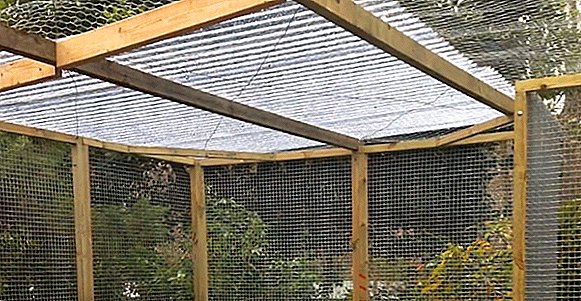 Polycarbonate roof installation
Polycarbonate roof installation - Preparing the floor of the house. The floor is covered with clean river sand mixed with gravel, grass is sown, snags, perches and stairs are installed. You can build a hut from the branches and set houses for the rest. Additionally, ash boxes are placed where pheasants could bathe and dust. At this stage it is already possible to build feeders and drinkers.
 You can put green plants in the aviary
You can put green plants in the aviary - Processing aviary. In order to prevent the wood frame from rotting, the wood must be further processed. Best of all for this purpose suitable antiseptic based on diesel and bitumen. It is prepared like this: bitumen is placed in a bucket, heated to boiling, removed from the heat and diesel fuel is poured in small portions. The amount of diesel fuel is not strictly defined, but it must be such that the cooled bitumen is still liquid consistency. At the same time, it is hot antiseptic that is used for processing wood (it penetrates better into the tree structure - up to 7 cm deep). After treatment, it is necessary to allow the tree to dry for 24-36 hours, and after that it should be treated with oil paint (nitro lacquers and nitro paints are prohibited). Before painting the wooden frame must be primed - so it will not remain streaks of paint. The back wall, which should be completely lined with wood, should have small gaps: pheasants are not afraid of drafts (on the contrary, they like fresh air), but the paint will start to rot and fall when the boards are tightly clogged.
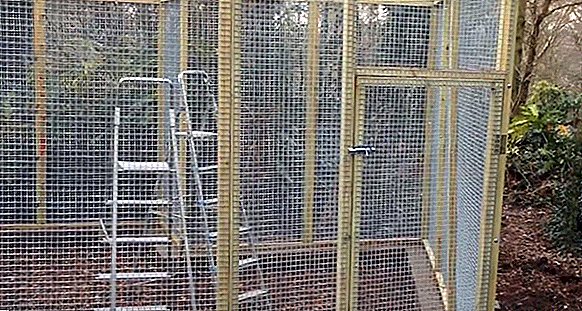
It is important not to saturate the enclosure with various structures: in the presence of a large number of houses, perches, koryag and feeders pheasants may experience difficulty in moving. For each bird there must be at least 1.5 meters of free space.
How to equip a poultry enclosure for pheasants at home: video
Did you know? Pheasants differ not only by their non-standard appearance, but also by their peculiarity, they emit different sounds: depending on the situation and their intentions, the pheasant can make up to 100 sounds of different volume, pitch and timbre. In this case, mostly males shout, but females give a voice extremely rarely - only in case of fright does it emit a rather weak squeak.
Care of the aviary
The main rule of any aviary (including the pheasant) is cleanliness above all. No matter how modern and equipped the aviary is, if there is dirt in it, the birds will start to feel bad, there will be a risk of developing various viruses and diseases. Rules for the care of the aviary are as follows:
- Feeders, drinkers, perches, houses - all this should be regularly washed and treated with a disinfectant (for example, slaked lime or caustic sodium).
- Sand is also subject to regular replacement (at least 1 time in 2 months).
- Dung, feathers and down particles should be cleaned daily.
- Sometimes small rodents begin to sneak through the sagging or damaged mesh. To protect the enclosure from such uninvited guests, you should use some methods (for example, install mousetraps).
- To prevent the appearance of parasites in the house from the inside, the boards are covered with a layer of lime - it is safe for birds, but it prevents the growth of bacteria.
- General cleaning and disinfection of the entire house should take place every year (in summer sunny weather).
Aviary for industrial breeding of pheasants: video Building an enclosure for pheasants is not a time consuming process - even a novice can handle this job. If you breed pheasants only for one season, you can build the simplest enclosure out of the frame and the tensioned net. In all other cases, it is important to stock up on high-quality materials and install a sturdy aviary structure: in a well-built poultry house, pheasants can be confident in their own safety and feel good.
Reviews
in winter, when there is no snow and frost, do you give water every day or twice a day, or once in two days?)) we are waiting for a photo of your enclosures!





 Layout of the foundation. Then it is necessary to prepare a mortar (cement with sand in the ratio 1: 4). Bars are laid in a dug ditch, and poured on top of the prepared solution (the width of the bar should not be much less than the width of the ditch itself). The drying time of the foundation is from 2 to 7 days depending on weather conditions.
Layout of the foundation. Then it is necessary to prepare a mortar (cement with sand in the ratio 1: 4). Bars are laid in a dug ditch, and poured on top of the prepared solution (the width of the bar should not be much less than the width of the ditch itself). The drying time of the foundation is from 2 to 7 days depending on weather conditions. Installation of the frame Next, the grid is tensioned onto the installed frame and fixed with brackets. It is important to bend all the sharp ends of the brackets - frightened pheasants can get hurt about them.
Installation of the frame Next, the grid is tensioned onto the installed frame and fixed with brackets. It is important to bend all the sharp ends of the brackets - frightened pheasants can get hurt about them. Mesh mount
Mesh mount Polycarbonate roof installation
Polycarbonate roof installation You can put green plants in the aviary
You can put green plants in the aviary
